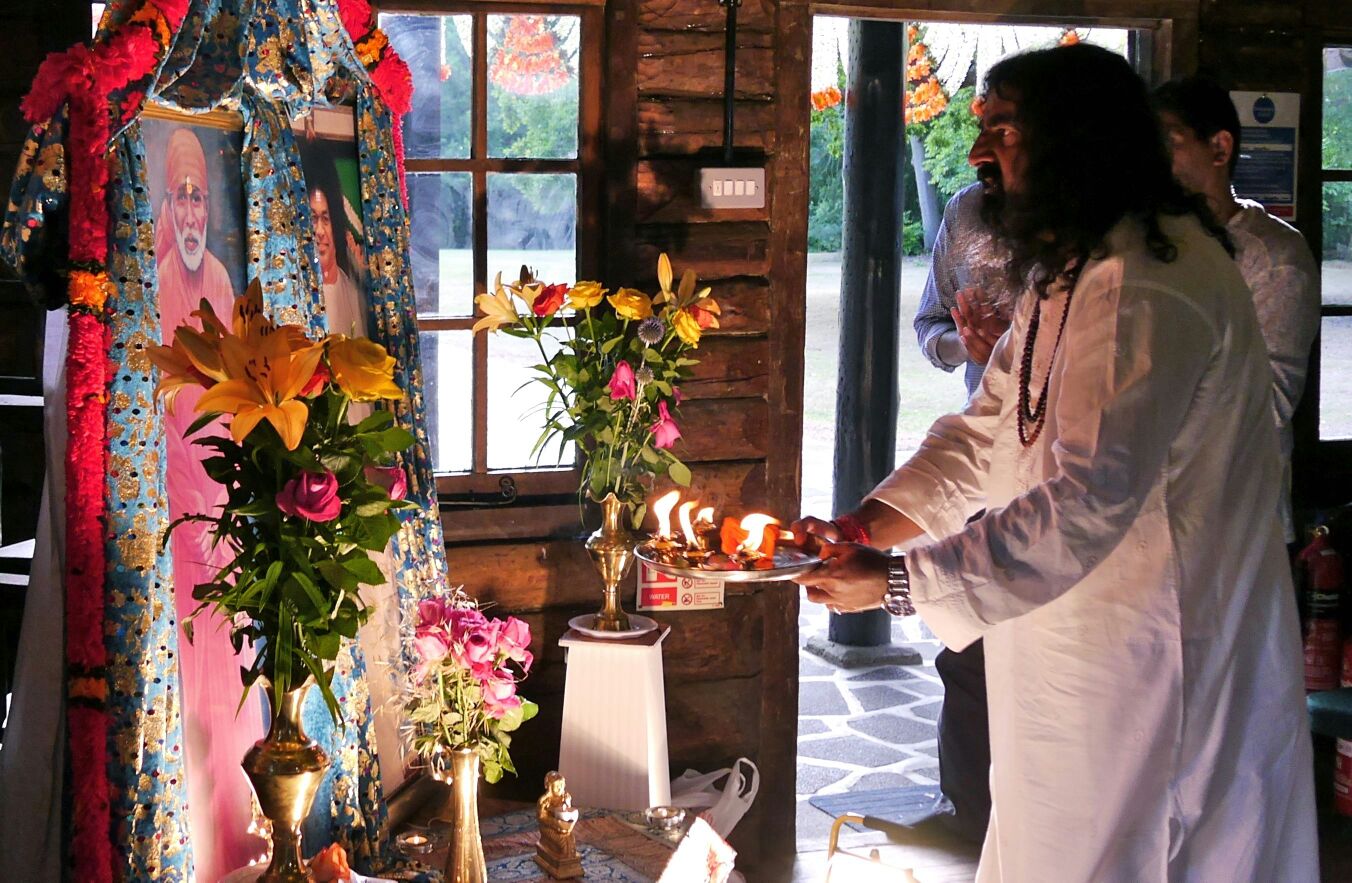
Though I had heard about Shirdi Sai Baba many years ago, I considered him just another saint and had not given him too much thought.
I
In 2004 on my return from Iraq, someone requested to film an interview with me on the subject of spirituality in management. At that time, I had not yet started teaching. This was being filmed as a conversation on a stroll by the beach. It so happened that the first shot was right in front of a Shirdi Sai temple. I did not know anything about him at that time. But just like I always do when near the shrine of a saint, I offered my respect and surrender in the form of prostrations at the feet of Baba’s idol. In exactly two weeks, I was in Shirdi, and I consider this a miracle.

Soon after the filming of the interview, I happened to be in a bookstore in Mumbai. I found myself asking for a book on Shirdi Sai Baba, though I had not walked in with any intention of purchasing one. This book was the Sai Satcharita. I started reading it and as mentioned earlier, reached Shirdi not long after. Stepping into the temple felt like I had finally reached home; it was such a great feeling. My visits continued and the connection grew. Later my job took me to Dubai, and when I had to visit Mumbai for a meeting, I planned a trip to Shirdi as well. I made arrangements for a cab to go to Shirdi straight from the airport. While at the airport, I was talking on the phone to a friend, a saint with powers to foresee. He remarked that a big miracle was awaiting me at Shirdi. The human mind being the way it is, my mind then tuned to expecting one, and other things went out of focus.
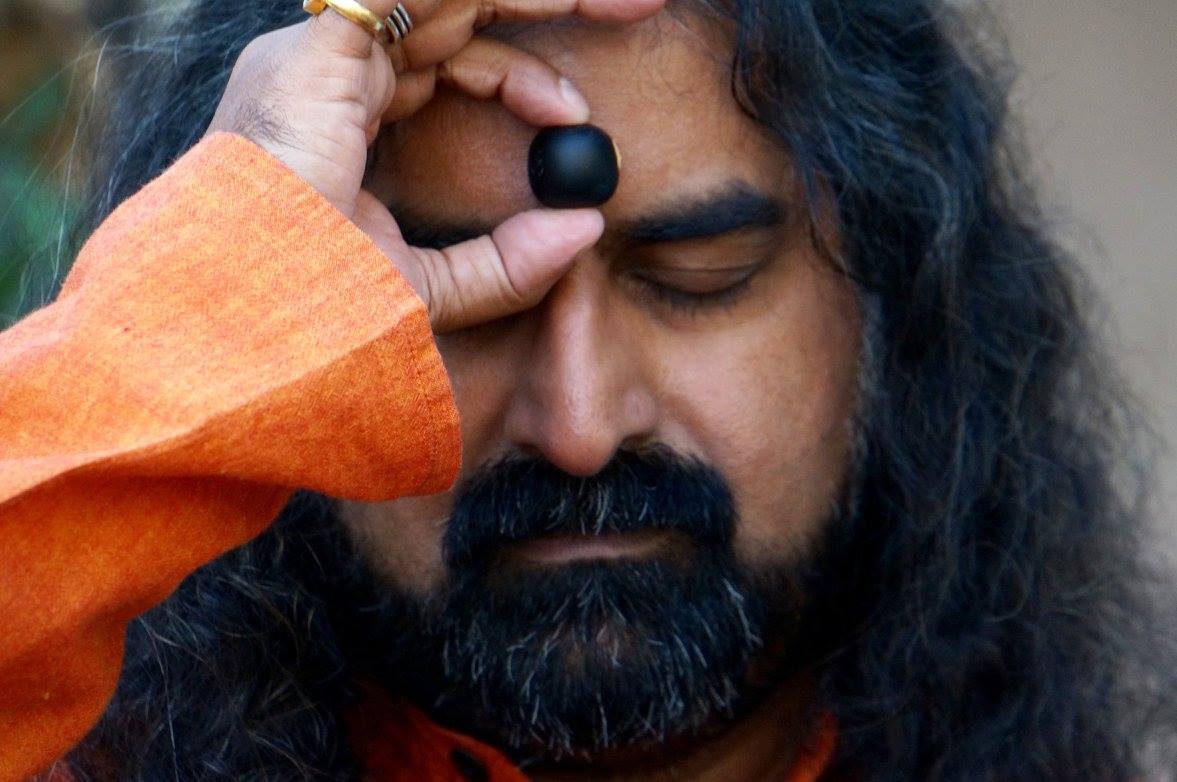
After reaching Shirdi, I told the cab driver I needed to get materials for the dhuni, giving him sufficient money to purchase them. We proceeded to Dwarkamai. The setup for the darshan is that the line moves one-way only. I placed the offerings into the dhuni and was heading to the exit door when an old man came in with a child, stopped me, and held my hand. He had actually walked in through the exit. It didn’t occur to me at that time how improbable that was. I doubt if there was any other witness either. He addressed me, or rather commanded, “Idhar aao, sar idhar rakho” (Come here and place your head here). This was on a pillar that Baba used to lean on every day, when he lived there till 1918. I obeyed, spontaneously placing my head on the pillar, my mind blank. But the memory of that firm grip on my hand remains. Then he said, “Ab jaao” (Now leave). I obeyed and left. In any case, one can’t linger because of the constant flow of devotees.
When we were preparing to drive back to Mumbai, I called my saint friend again and told him I had not seen anything that could be described as a miracle – no spectacle or jaw-dropping incident. He asked me if it wasn’t good enough that Baba himself had come to meet me? That’s when it dawned on me that the old man had been Baba himself! And of course, he always chooses a form different from the picture we imagine in our heads – he may appear as a beggar or a bird, or in any form of his choice. And only if it is His will, can we realize His presence.
That was the turning point of my existence. Baba asked me to put my head on the pillar he used to lean on. That was the highest surrender I could have possibly done on the spiritual path in 2004. Every later visit to Shirdi also felt great with special significance each time. But it is important to be aware that the mind likes repetition and expects something every time. In true and complete surrender, there will be no expectation. Baba is more active today than he was when he was alive, when he had to work with the constraints and limitations of a physical body and the associated personality. People create mental images. We think that if Baba appears, it must be in the form that we see in his pictures. That cannot be true.
II
Another occurrence involved a great artist named Sudhakar Kaskiwalla (now in his seventies), who had once worked as a set designer for the producer and actor, Raj Kapoor. His father and grandfather had lived with Baba in Shirdi and so there was a very deep connection. He paid a visit to our home in Kerala. When I presented him with a gift of two pictures of Baba, within just five minutes his son called from Bangalore and asked him, “Papa, if you’re passing this way, I’d like you to please bring me two pictures of Shirdi Baba.”
Even though disabled by a paralytic attack, Kaskiwalla had been inspired to do a sketch of Baba. Later when I visited him, he showed me the sketch. He narrated that long ago when he had visited Shirdi with that sketch, some people who had lived with Baba were still alive. On seeing the sketch, those people were simply amazed at its resemblance to the Baba of their memories, and wonderstruck how Kaskiwalla could have drawn such an absolute likeness without ever having seen Baba. The sketch was treated reverently like a blessing from Baba and puja offered to it at home. Many copies have been made of the picture, so I requested Kaskiwalla for a copy, but he was silent. Then just as I was taking leave from his place, he asked me to wait, and taking down the original sketch, he offered it to me! I was overwhelmed because to me this was too priceless a piece, made from the heart like a miraculous living image of Baba, confirmed by Baba’s contemporaries. I kept insisting that a copy would be just fine, but he pressed on saying that I deserved it. Feeling that it wouldn’t be right to accept without paying, I offered to do so. But he refused to take anything saying the piece was beyond price labels. But since I kept insisting, he said to make an offering instead at the picture of his art guru, which I did. I still have the picture today in my house in Kerala.
III
I have experienced many, many such incidents in life. It was a long cherished desire of ours to construct a Shirdi Sai temple in the Ammucare village in Kerala. We ran into funding problems, so we thought of building it at our Maharashtra ashram instead, but still faced financial issues. A friend, an ardent Sai devotee who has visited Shirdi almost 4000 times, was going to be visiting Shirdi again, and we asked him to surrender our thought at Baba’s feet there. He did so, praying to Baba to grant it if it was His will. As he came out of the temple and was getting into the car, a man approached and handed him a heavy package saying, “You are planning to construct a Sai temple, here’s something for that purpose”. Our friend opened the package to find Baba’s padas or feet in marble, meant to be installed in the temple. When he looked up, the man was gone. Baba himself had delivered his approval! Those padas are currently in our pooja room or home shrine since the temple is not yet a reality, though it soon will be, if Baba wills it.
IV
Another incident that occurred was when we were dealing with a business venture, which wasn’t doing well and we wanted to wind up and close shop. Our chartered accountant directed us to get back all the shares distributed to various people, and submit them to the government for nullification. Locating the shareholders was proving to be very difficult, in spite of our best efforts. The deadline date for submission was nearing and I explained to the accountant how impossible it was, to get hold of all the shares again. The next morning, my father opened the door to our pooja room at home as usual, and saw an envelope sitting on top of Baba’s marble padas. Opening it, we found a bunch of papers that contained every single share that had been distributed at the start of the business venture. It was astounding: nobody could have gone and collected them – most of the shareholders were untraceable.
V The Navanath Tradition
Shirdi Sai Baba is a guru of the Nath tradition, a tradition formulated by Lord Dattatreya based on the instructions of Lord Krishna. Lord Krishna, an avatar of Mahavishnu, had incarnated in order to preserve dharma on earth. In order to continue that mission after his passing away, Lord Krishna summoned to earth the Navanarayanas or Nine Narayanas of the cosmos (really extensions of Mahavishnu) and asked them to establish the Navanath sampradaya or Navanath tradition. Adinath, the first of nine Naths in the tradition, is Lord Shiva. He was followed by Matsyendranath, Gorakshanath and several others- the tradition flows forever. The text Sripada Srivallabha Charithamrutham mentions the saint Sripada, incarnation of Lord Dattatreya, calling upon Hanumanji to take birth as Shirdi Sai Baba. Hanumanji is an immortal or chiranjeevi, so Shirdi Sai Baba may be considered an amsha or part of him.
The distinct feature of the Navanath tradition is the absence of formal procedures or teachings; everything happens in the presence of the guru. Proximity to the guru is paramount; by just being present in his energy field, one gets cleansed and liberated.
Shirdi Sai Baba often asked for the two coins of shraddha (devotion) and saboori (patience) from those who came to him. These two may be considered to be like walking sticks for any seeker in the tradition. The path may sound simple but it is difficult in practice – since even a speck of ego or doership is unacceptable. Total surrender to the guru or master is a must. The importance of this is reflected in a quote by Swami Muktananda- ‘I never asked my master why’. Often, no explicit guidance or instruction is given by the guru. Yet everything is delivered. Shirdi Baba himself said that though his own guru was very powerful, he taught him nothing but delivered everything. Actually nothing can be taught verbally: teaching by talking is an activity or expression of the mind. It is really in beingness that the disciple receives the transmission.
VI
I have numerous stories about Baba. Several accounts are from people whose lives changed for the better after they received the Sai Satcharita book from me. Baba operates 24/7.
Today people from all over the world visit Shirdi- not because it is a fancy place, but because their experiences created faith and brought them there. You can see the faith brimming in their eyes. Baba never behaved according to norms and frames in his lifetime. Like any Nath guru, he was unpredictable. He was taken to court, some thought him a madman, others were disillusioned by his mannerisms. Historically, spiritual masters have always been misunderstood by their society. Examples are Jesus and Sant Jnaneshwar. Jnaneshwar lived in the Maharashtra region of India and attained liberation by age 22. He and his siblings had been orphaned in childhood and all were highly advanced spiritually. But society treated them very cruelly, pushing the family to suicide. Such societies have always existed, unable to understand subtlety and persisting in the materialistic view.
Baba’s enduring popularity shows that saburi or patience worked beyond his passing away in 1918. He is more popular today than when he was alive. People often have a hard time acknowledging a guru’s stature when they meet him in the flesh. People arrive with some kind of mental image of what an enlightened master should look like and how he should behave. When the guru’s personality doesn’t match up to that image, they are shocked – “Oh, I didn’t expect the guru to behave that way” or “What, he smokes a chillum”. Baba sometimes would express interest in a new brand of cigarettes; he shouted and screamed at other times. This kind of commonplace behavior would confuse people, creating conflicts in their minds. What is not known is that a guru, a liberated being, never ever feels pushed to talk or act in a certain way, or maintain a certain appearance. A true guru is free in the real sense of the word, unbound by a thing, person, situation or habit. And Baba was always in absolute beingness – he was everything and he was nothing. This truth most people could not understand.
If you do not demolish preconceived notions or concepts of the mind, you will be unable to catch the truth; it will slip past. If you hold on to a mental picture of Baba, imagining that he appears only in that form or body, it will be difficult for you to “see” him. Instead if you drop that mental picture and reach for the consciousness that Baba is operating in, that will be a genuine enduring connection where you will be able to actually feel and experience the oneness. Otherwise you are only talking of a few miracles, just mild expressions of the huge Consciousness. Look upon Baba as omnipresent, powerful, ever available and surrender to him without expectation, without barriers, never asking for anything. Everything will be delivered. Why would you go to Shirdi asking for worldly, mundane things when Baba can merge you with his own or Shiva consciousness?
VII
There was a devotee, a woman named Radhakrishna Mayi living in Shirdi near Baba. She became pregnant and Baba was blamed: that was the level to which petty minds were stooping in order to torment him. Of course today we know that he was beyond all that. But Baba never felt the need to answer to such people or seek their approval. He had incarnated with a purpose, just like Jesus, to do what rightfully needed to be done at that time. There was no deviation from that purpose, but remember that his body was like any other human’s regarding food and sleep, and subject to pain, decay and death. Thus we must understand the entity in absoluteness. Otherwise limited vision will cause us to miss the truth – a reason why many people are not attaining the highest point in the path of spirituality. Disillusionment or fall will happen afterwards and it takes a long time to climb back up.
[youtube https://www.youtube.com/watch?v=fbb5SFNR0PE]
Transcribed by Geeta Iyer
Edited by Aviral Srivastava


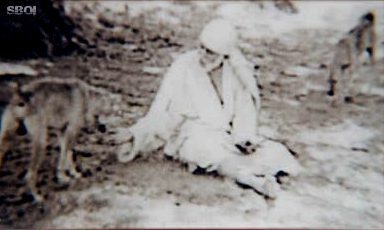
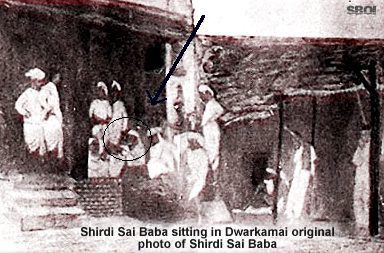
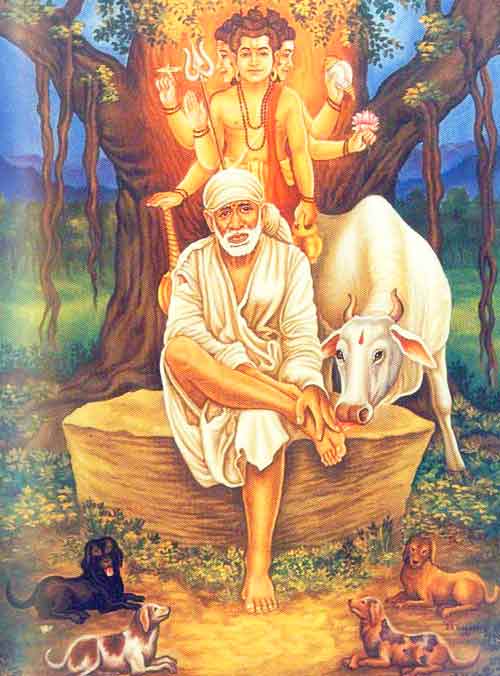
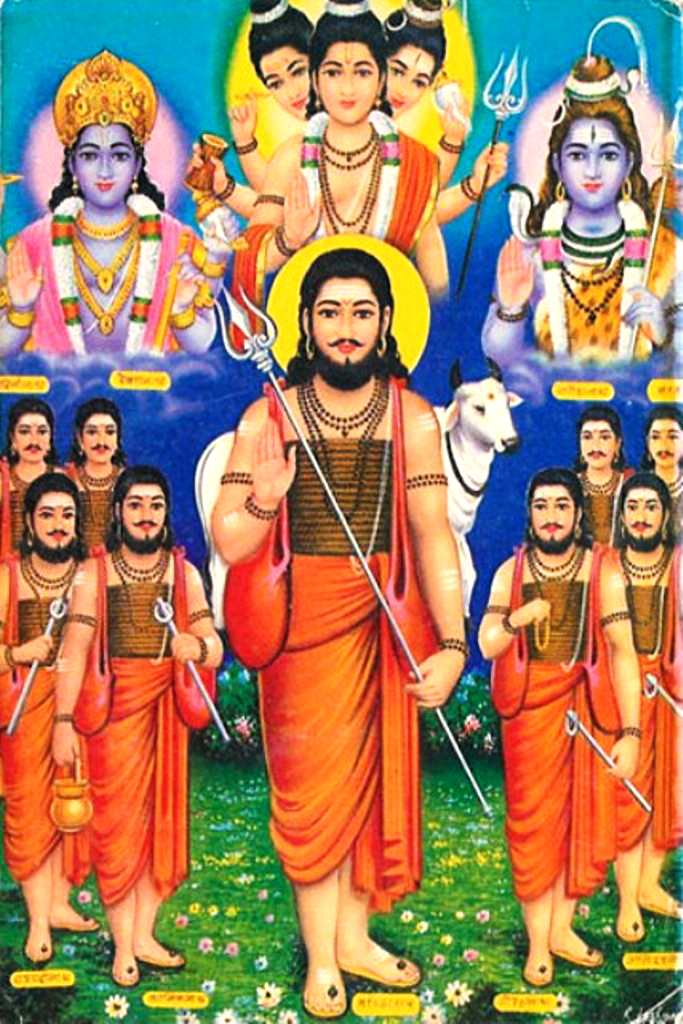
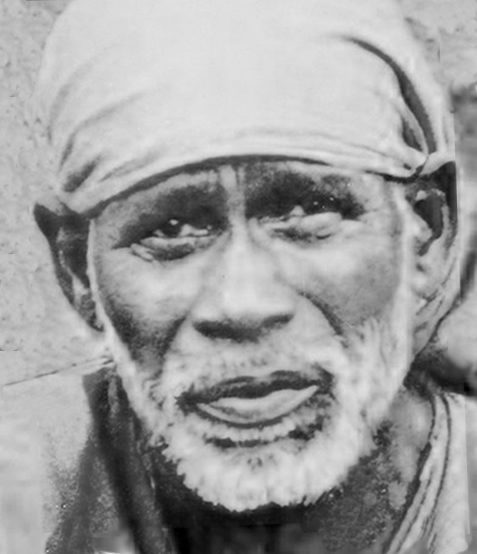
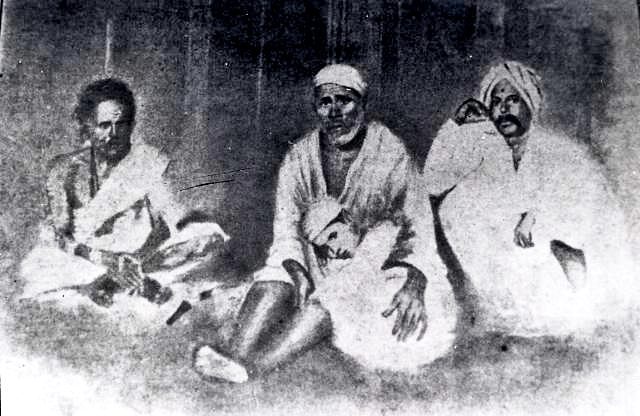
4 thoughts on “Talk on Shirdi Sai Baba”
Thank you for posting this enlightening satsang.
Jai Baba
A really good talk on Shiridi Sai Baba. Thanks for posting it.Humble regards.Please post more of this type blog and also reg. inner significance Shiva in Vedic context.
Pingback: Meeting Mohanji | Experiences With Mohanji
Pingback: How to feel Baba's presence within - Mohanji Satsangs